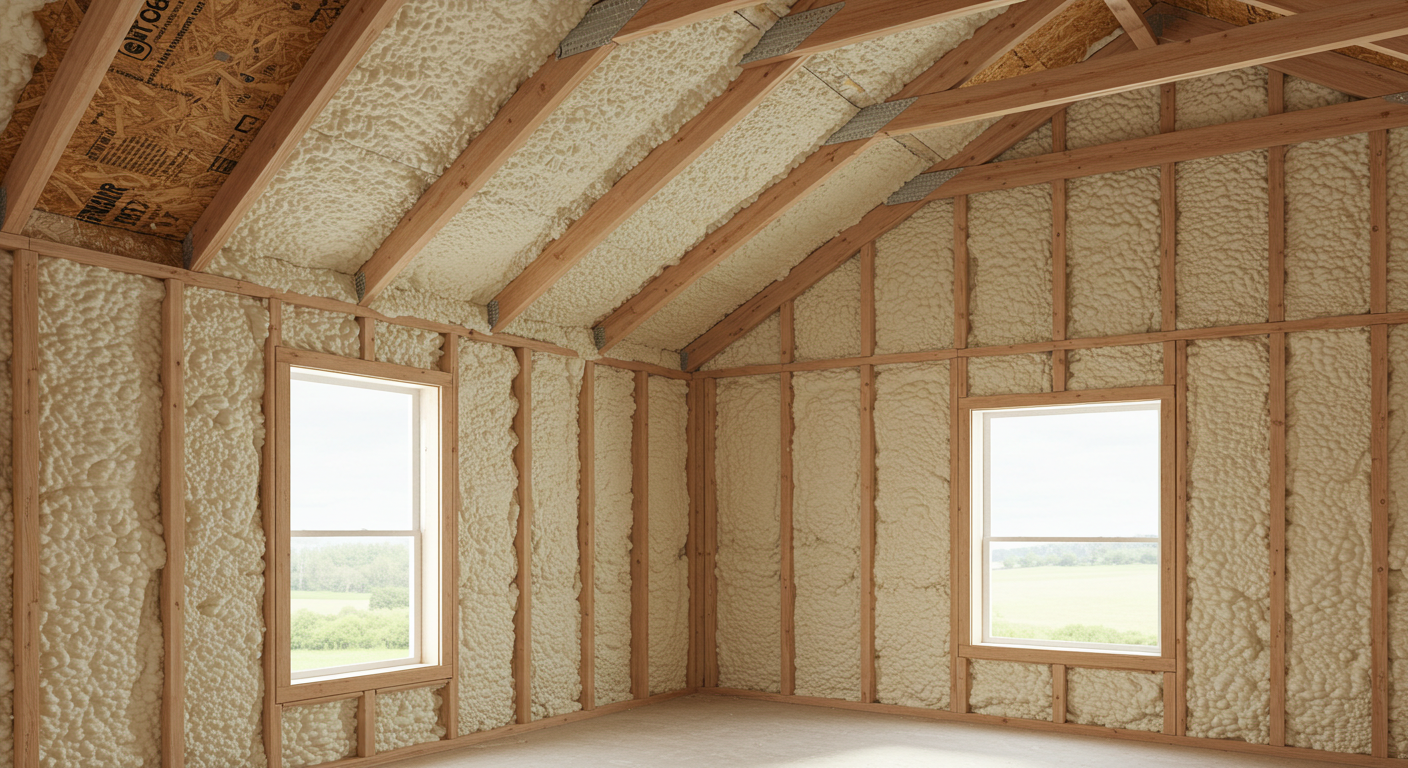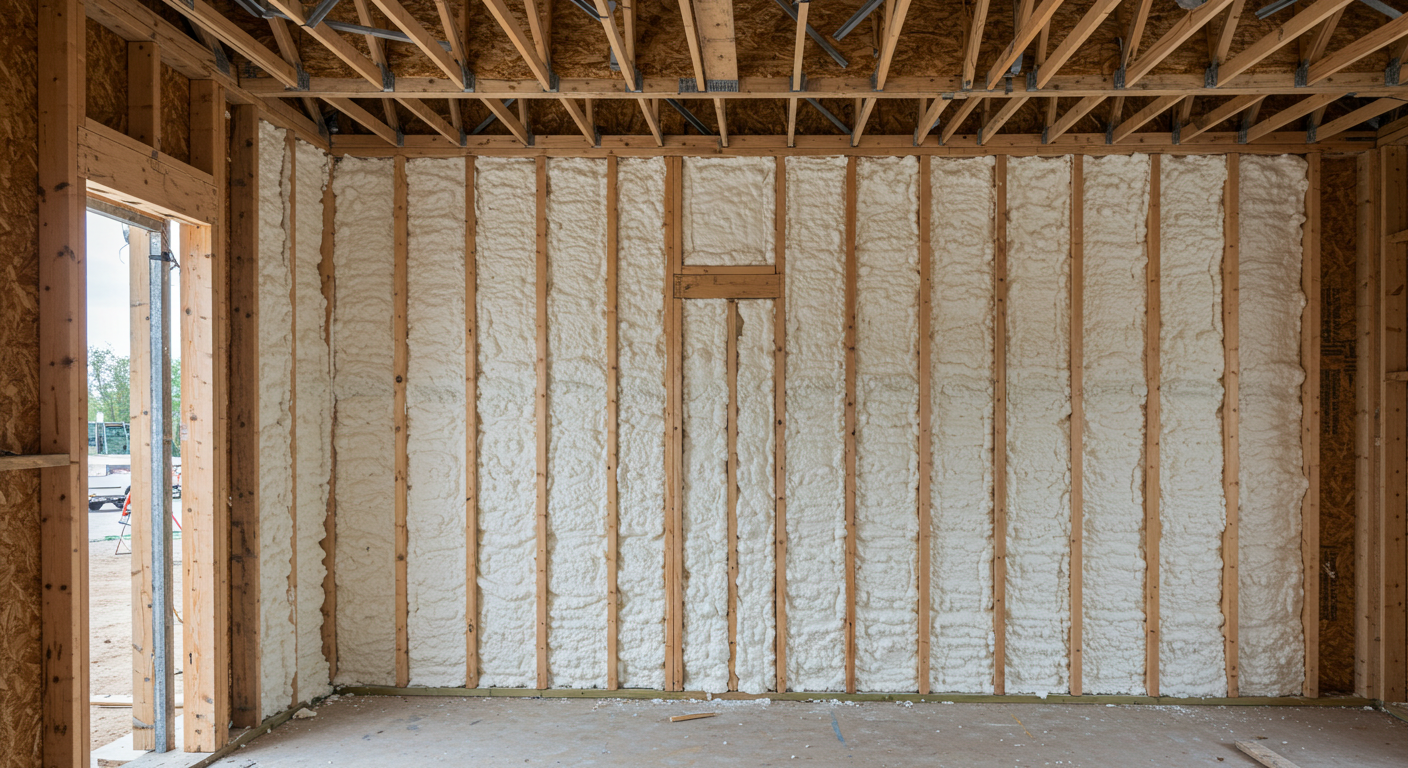
Spray foam insulation is widely used in homes, commercial buildings, and agricultural structures for its thermal performance and air-sealing qualities. Still, several misconceptions persist. Some believe it’s unsafe, others think it doesn’t work in humid climates, or that it’s too expensive compared to other options. These myths create confusion and lead to poor insulation choices.
This article breaks down the most common misunderstandings, backed by direct installation experience and technical data. It highlights facts versus fiction and guides property owners evaluating insulation solutions. The insights provided are based on hands-on application in varied environments, including Kansas and neighboring regions with significant seasonal variation, through the expertise of Ozark Eco Foam.
| Myth | Reality |
|---|---|
| Spray foam is toxic after installation | Off-gassing stops after curing (usually within 24 hours). Once cured, it’s inert and safe. |
| It can’t be used in humid or wet climates | Closed-cell spray foam acts as a moisture barrier and performs well in high-humidity environments. |
| It’s always more expensive than fiberglass | While the upfront cost is higher, spray foam lowers energy bills significantly over time. |
| All spray foam types are the same | Open-cell and closed-cell serve different functions; using the wrong type leads to issues. |
| You can install it yourself | Proper installation requires training and safety precautions. DIY risks include improper curing and poor coverage. |
| It causes wood to rot | Spray foam blocks moisture movement, which actually helps prevent condensation and wood rot when installed correctly. |
| It eliminates all ventilation needs | Spray foam controls air leakage but does not replace proper ventilation systems. |
| Feature | Open-Cell Spray Foam | Closed-Cell Spray Foam |
|---|---|---|
| Density | ~0.5 lbs/ft³ | ~2 lbs/ft³ |
| R-value per inch | ~3.6 | ~6.5 |
| Moisture Barrier | No | Yes |
| Air Barrier | Yes | Yes |
| Sound Dampening | High | Medium |
| Flexibility | More flexible | Rigid |
| Ideal Use Cases | Interior walls, sound control | Basements, crawl spaces, metal buildings |
Bonus Tip: In areas with temperature extremes, like Kansas winters and summers, closed-cell spray foam is more effective for exterior-facing walls and unvented attics due to its moisture resistance and higher R-value.
| Specification | Open-Cell | Closed-Cell |
|---|---|---|
| Expansion Rate | 100:1 | 30:1 |
| Permeability | ~10 perms at 3″ | <1 perm at 1″ |
| Structural Support | Minimal | Adds wall rigidity |
| Fire Rating | Class 1 | Class 1 |
Bonus Tip: For agricultural structures, closed-cell insulation resists pests and moisture, helping preserve building integrity and reduce heating costs during winter.

Only if the existing material is clean and dry. Often, removal is recommended to ensure proper adhesion and coverage.
Typically over 30 years without degradation when correctly installed.
Open-cell spray foam provides excellent sound dampening, especially in wall cavities.
Yes, though evaluation is needed to address existing moisture or structural issues.
For reliable insulation insights based on real-world application in Kansas and surrounding regions, contact:
Ozark Eco Foam 📧 ozarkecofoam@gmail.com 📞 (417) 572-5893
Explore the best approach to insulating your home or building with knowledge-backed recommendations from experienced professionals.
Spray foam provides both air sealing and insulation. Cellulose mainly adds thermal resistance but doesn’t stop air movement.
Yes. Closed-cell works well in unvented attics; open-cell is used in vented designs. Application depends on roof structure and moisture exposure.
No. Occupants should leave the area during installation and return after the curing period, usually 24 hours.
Not if installed correctly. Closed-cell retains its shape; improper mixing during application is usually the cause of defects.
No. Unlike fiberglass, spray foam doesn’t provide nesting material or easy entry points.